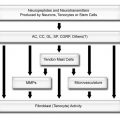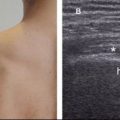Figure 7-2. Os acromiale. [A] Positioning of the probe. [B] Corresponding 12-5 MHz US image shows a double acromioclavicular joint, corresponding to the acromion-OA (asterisk) and OA-clavicle (asterisks) joints. Although sensitive for detection of OA, US has yet to be tested for classification purposes. [C] Corresponding radiography (axillary view) shows the typical meso-acromiale (meso). Acr= acromion. Oa= os acromiale. Cla= clavicle.
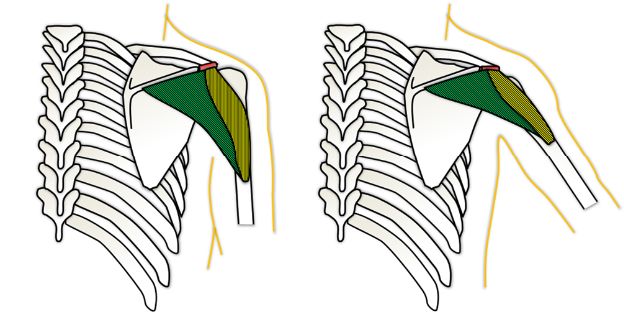
Figure 7-3. Unstable os acromiale. Schematic drawing of a posterior view of the right shoulder demonstrates unstable OA (red) during abduction of the shoulder because of contraction of the acromial head of the deltoid muscle (yellow), which can pull down the unstable acromion and narrow the subacromial space. Green= scapular head of the deltoid muscle.
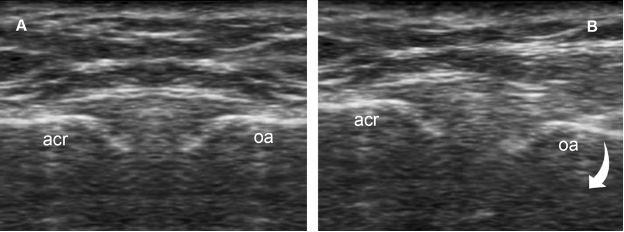
Figure 7-4. Unstable os acromiale. [A] Baseline long-axis 12-5 MHz US image shows the acromion-OA joint. [B] Graded compression with the probe depicts hypermobility and angulation of the OA (curved arrow shows the direction of the movement). The normal OA does not show any appreciable movement at US. Acr= acromion. Oa= os acromiale.
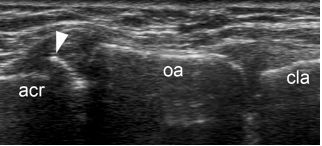
Figure 7-5. Degenerative changes at the site of non-union. Long-axis 12-5 MHz US image shows reduced interosseous distance and marginal osteophyte (arrowhead) at the acromion-OA joint. OA may develop degenerative changes at both acromion-OA and OA-clavicle joints. Acr= acromion. Oa= os acromiale. Cla= clavicle.
Surgery is usually reserved for symptomatic OA that has failed conservative treatment. The small pre-acromiale is generally managed with excision and meticulous deltoid repair. In larger OA, the optimal surgical approach is unclear. Options include excision, internal fixation, and acromioplasty. Persistent deltoid dysfunction may result from excision of a large OA. Both acromioplasty and internal fixation preserve large fragments while maintaining deltoid function. Fixation of meso-acromiale with cannulated screws versus K-wires results in better radiographic healing, reduced need for removal of internal fixation hardware, and improved clinical outcome.19
Stay updated, free articles. Join our Telegram channel

Full access? Get Clinical Tree



